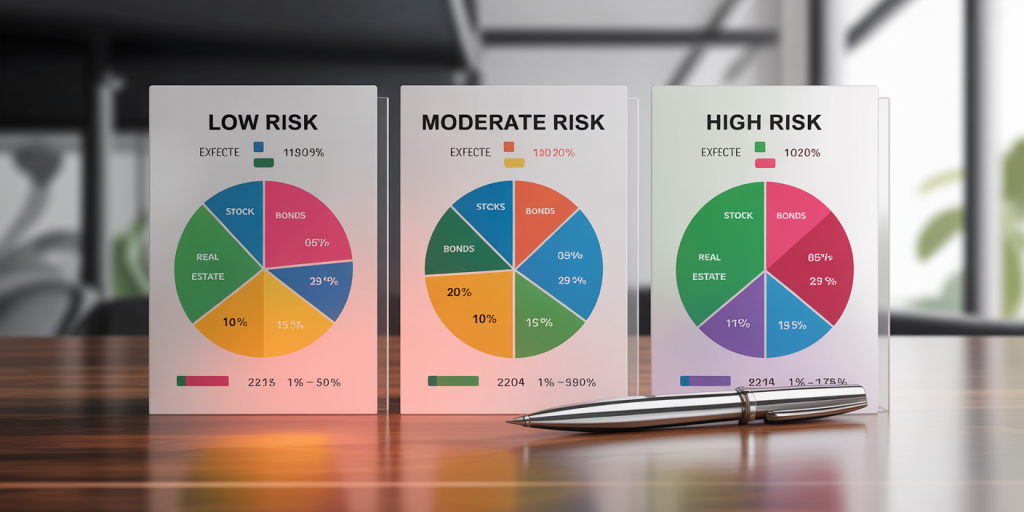What Is Risk Tolerance? And Why It Matters in Investing
Understanding risk tolerance is essential for anyone looking to make informed investment decisions. It fundamentally shapes how investors structure their portfolios and weather market volatility. This article explores the concept of risk tolerance in detail, highlighting why it is a critical parameter in investment planning, and provides insights backed by statistics, examples, and expert analysis.
Defining Risk Tolerance in Investing
Risk tolerance refers to an investor’s ability and willingness to endure fluctuations and potential losses in the value of their investment portfolio. It is not just a psychological attribute but also an interplay of financial capacity, time horizon, personal goals, and emotional resilience. Risk tolerance varies dramatically from person to person, influenced by demographics, income stability, investment knowledge, and past experiences.
For example, a 25-year-old professional like Sarah, who is early in her career with a steady income and a 30-year investment horizon, is likely to have a high-risk tolerance. She can afford to invest in volatile assets such as growth stocks or emerging markets, expecting substantial returns over the long term. Conversely, a 65-year-old retiree named John, relying on his portfolio for steady income, typically exhibits a low-risk tolerance, favoring bonds and dividend-paying stocks to preserve capital and mitigate losses.
Quantifying risk tolerance often involves questionnaires employed by financial advisors, assessing attitudes through questions on reactions to hypothetical market losses or gains. A study by Vanguard found that nearly 37% of investors overestimate their tolerance for risk, leading to decisions that could compromise portfolio longevity during market downturns.

The Components That Influence Risk Tolerance
Several factors collectively determine an investor’s risk tolerance. These can be broadly divided into psychological, financial, and situational components.
Psychological elements include an individual’s emotional response to market swings. People naturally vary in their capacity to handle uncertainty and loss. Some thrill in taking risks and can stomach significant portfolio fluctuations, while others experience anxiety or panic even with small losses. Behavioral finance research by Kahneman and Tversky shows that loss aversion—where the pain of losing outweighs the joy of gains—strongly impacts investment behavior, often leading to overly conservative choices.

Financial factors encompass income, net worth, liquidity needs, and investment horizon. Investors with stable, high incomes and large financial cushions can typically accept more volatility because their essential expenses are covered regardless of investment performance. A young, dual-income household planning to buy a home in five years might accept different risks than a single-income retiree needing immediate income from investments.
Situational factors include life stage, responsibilities, and goals. A middle-aged parent saving for children’s education might prioritize capital preservation, whereas a young entrepreneur could seek aggressive growth. Changes to these factors—such as job loss or health issues—can alter risk tolerance over time, emphasizing the need for periodic reassessment.
Why Risk Tolerance Matters for Investment Strategy
Risk tolerance directly shapes asset allocation—the distribution of investments across stocks, bonds, cash, and other securities. Asset allocation is the cornerstone of portfolio diversification, helping balance risk and return to meet personal financial goals. A mismatch between risk tolerance and portfolio composition often results in suboptimal outcomes: either taking on unnecessary risk leading to stress and potential panic selling or avoiding risk and missing out on growth opportunities.
Consider an investor with a moderate risk tolerance who invests 70% in stocks and 30% in bonds. If this individual actually exhibits a lower tolerance, the inevitable market downturns could induce emotional decisions like withdrawing investments at a loss. On the other hand, an overly conservative portfolio may lag inflation, eroding purchasing power over time.
A comparative table illustrates typical asset allocations based on varying risk tolerance levels:
| Risk Tolerance | Stocks (%) | Bonds (%) | Cash (%) | Expected Annual Return (Historical)* | Estimated Volatility (%) |
|---|---|---|---|---|---|
| Low | 30 | 60 | 10 | 4.5% | 7% |
| Moderate | 60 | 30 | 10 | 7% | 12% |
| High | 85 | 10 | 5 | 9.5% | 18% |
*Data derived from historical returns based on S&P 500 and Barclays Aggregate Bond indices (source: Morningstar data, 1990-2023).
Notice how higher risk tolerance portfolios have greater expected returns but also increased volatility. Ignoring personal tolerance can reduce the likelihood of staying invested during rough patches when holding steady matters most for long-term success.
Real-World Examples Illustrating Risk Tolerance Impact
To better understand the practical implications of risk tolerance, examine two contrasting investor stories during the 2008 financial crisis.
Jessica, a conservative investor in her late 50s, allocated 80% of her portfolio to bonds and cash. Despite the recession, she preserved most of her capital but saw returns of only 2% annually during that decade, barely keeping pace with inflation. Her conservative stance aligned well with her risk tolerance but limited wealth accumulation.
Meanwhile, Michael, aged 30, with a high-risk tolerance, held 90% in equities, experiencing a 37% portfolio decline in 2008. However, he remained invested, adding more during the dip, and by 2020 saw his portfolio value appreciate nearly 250% from the pre-crisis peak. Michael’s ability to endure short-term losses for long-term growth epitomizes the benefits of aligning investments with risk tolerance and time horizon.
A survey by the CFA Institute in 2021 indicated that approximately 45% of retail investors felt they had unrealistic expectations about their risk tolerance, reinforcing the need for education and professional guidance.
Tools and Techniques to Assess and Manage Risk Tolerance
Investors today have access to numerous tools for assessing and managing risk tolerance. Online risk tolerance questionnaires typically ask about hypothetical reactions to market scenarios, investment goals, and timeframes. Certified Financial Planners (CFPs) integrate these tools into holistic financial plans, balancing risk with potential rewards.
Once risk tolerance is identified, modern portfolio theory (MPT) frameworks help optimize asset allocation, balancing expected returns against volatility. Robo-advisors capitalize on algorithms that tailor portfolios based on client input about risk and goals, making personalized investing accessible.

Regular portfolio rebalancing, which involves adjusting holdings to maintain the desired risk profile, helps prevent drift toward risk levels inconsistent with tolerance. This strategy was exemplified by the “Endowment Model” employed by Yale University’s investment office, which maintains a diversified portfolio suitable to their long-term goals and risk acceptance, delivering an average annual return of 11.3% over 20 years ending in 2022, outperforming traditional balanced portfolios.
Also crucial is ongoing risk tolerance reassessment, especially after major life events or significant market changes. Investors who fail to adapt risk management strategies risk either undue stress or opportunity loss.
Future Perspectives on Risk Tolerance and Investing
The landscape of investing is continuously evolving, influenced by macroeconomic trends, technology advancements, and shifting investor demographics. Millennials and Gen Z investors, for example, tend to exhibit different risk tolerance profiles influenced by factors such as digital literacy, social values, and economic uncertainties including rising inflation and geopolitical tensions.
Behavioral finance research is increasingly incorporating insights from neuroscience, helping advisors better gauge client tolerance through biometric data and artificial intelligence. These emerging tools promise more precise customization of portfolios.
Environmental, Social, and Governance (ESG) investing also challenges traditional risk-return paradigms. For some investors, aligning portfolios with personal values may reduce risk tolerance for certain sectors (like fossil fuels) despite potential financial returns. This nuanced approach underscores the growing complexity of assessing risk tolerance in modern contexts.
Additionally, global economic uncertainties, including inflation spikes and central bank policy shifts, require investors to adopt more dynamic risk management strategies. The use of alternative investments—such as real estate, commodities, and cryptocurrencies—adds layers of risk and diversification that redefine traditional tolerance measures.
Ultimately, understanding and integrating risk tolerance into investment decisions will remain a fundamental practice. As data analytics and personalized financial technologies improve, investors can expect more tailored, adaptive portfolios that reflect not just financial goals but their nuanced risk preferences.
Risk tolerance is far more than a theoretical concept—it is the bedrock upon which successful investment strategies are built. Properly identifying and respecting risk tolerance helps investors stay the course through market turbulence, optimize returns over time, and achieve their financial objectives with confidence. As the investing environment grows more complex, embracing the nuances of risk tolerance and adapting to changes will be critical markers of both individual and institutional investment success.
